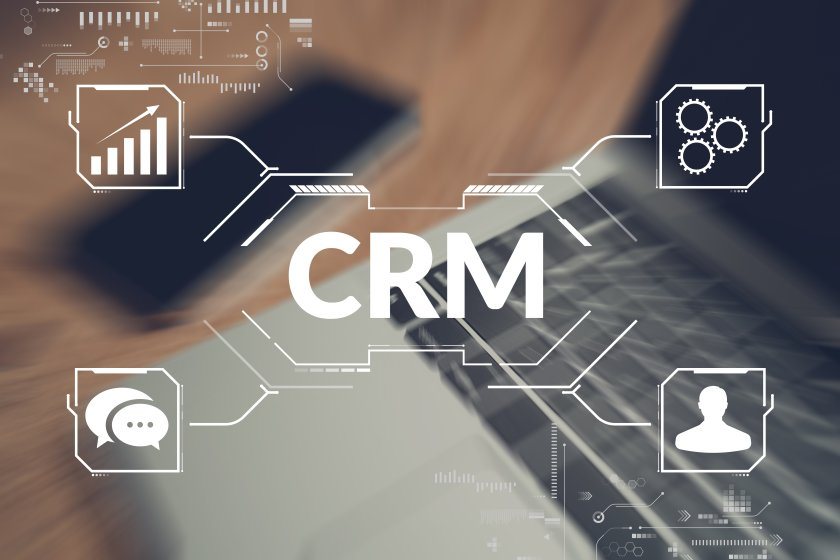An effective customer relationship management (CRM) system is essential for your business to organize interactions with your customers and prospects while gaining insights to improve sales and support. With the array of CRM solutions on the market, choosing the right one for your needs can be daunting.
This guide will walk you through the key factors to consider when selecting CRM software so you can find the best platform for your business. Look at evaluating features, comparing deployment options, assessing ease of use, understanding pricing models, and making a final decision. With the right information, you can confidently choose a CRM that becomes a seamless part of your customer management processes.
SUMMARY
- Define your Features Requirements
- Compare Deployment Approaches
- Evaluate Ease of Use
- Compare Pricing Models
- Implement Your CRM
Recap
>>> MORE: How To Choose Lead Management Software
1. Define your Features Requirements
To pick a CRM software, you must define your features requirements. The first step is outlining must-have CRM features depending on your sales process, customer support needs, size and industry. Here are some core features to look for:
- Contact Management: Maintain an organized database of leads and customers with relevant data, ensuring that all essential information is readily accessible. This comprehensive approach helps your team efficiently track and engage with potential clients, fostering stronger relationships and enhancing your overall business performance.
- Lead Scoring: Define criteria to automatically score new leads, allowing your sales team to focus on the most promising prospects. By implementing a lead scoring system, you not only increase the efficiency of your sales efforts but also optimize your conversion rates.
- Opportunity Tracking: Streamline your sales process by managing pipeline stages and deals to closure, while also forecasting sales with precision. This enables your team to stay organized and proactive in pursuing potential opportunities, ultimately leading to more successful conversions.
- Account Management: Create comprehensive customer profiles with historical data, communication records, and document management. This in-depth account management system enables your team to offer personalized service and support to clients. It also ensures that you have a complete overview of your interactions and transactions with each customer, fostering trust and long-term customer loyalty.
- Email Integration: Seamlessly sync email conversations into each contact’s record, providing your team with a holistic view of communication history. This integration ensures that nothing falls through the cracks and enables quick follow-ups and context-rich conversations. It also simplifies tracking email-based interactions with leads and customers, improving overall engagement.
- Reporting & Dashboards: Generate customizable reports on pipeline progress, closed deals, and customer data to gain valuable insights. These reports and dashboards offer a real-time overview of your sales performance and customer interactions, allowing for data-driven decision-making. They also assist in identifying trends, areas for improvement, and successes that can guide your future strategies.
- Mobile Access: Access and manage contacts and view reports conveniently via mobile apps, allowing your team to stay connected and productive on the go. This accessibility ensures that you’re always in touch with your sales and customer data, facilitating quicker responses and informed decisions when you’re not in the office.
- APIs & Integrations: Connect seamlessly with marketing, billing, and accounting tools through APIs and integrations, streamlining your operations and data sharing. These integrations enable your systems to work harmoniously, reducing manual data entry and ensuring that your team has access to all the necessary tools and information. This cohesive approach enhances efficiency and reduces the risk of errors in data management.
2. Compare Deployment Approaches
To choose CRM software, compare deployment analysis. Weigh access needs, customization requirements and available IT resources. While assessing features, you’ll also need to decide between on-premise, cloud-based or hybrid CRM:
- On-premise – Installed locally with maximum control. Requires IT infrastructure.
- Cloud – Web-based for 24/7 online access. Fast to implement but less customization.
- Hybrid – Mix of both with some data on-premise and some in the cloud. Added complexity.
3. Evaluate Ease of Use
To pay for a CRM software, evaluate its user friendliness. Choose a system aligned with your team’s abilities to drive adoption. The CRM must be intuitive for staff across roles to adopt fully. Assess:
- Interface design – Clear navigation, interaction flows, and data entry.
- Customization – Tailor system to match unique processes and terminology.
- Training – Online materials, videos, live training to onboard users.
- Ongoing support – Help center, forums, live chat support.
- Mobile experience – Ensure seamless experience across devices.
4. Compare Pricing Models
To ascertain the right CRM software with your budget, compare the prices. Pricing structures vary significantly between solutions:
- Per User:
Per User pricing is a flexible model where the cost of using the CRM software depends on the number of user licenses. As your team grows, the expenses will increase gradually. This approach allows your small business to start with a minimal investment and then scale up as their workforce expands, ensuring cost-effectiveness in the early stages.
However, it’s important to note that while this model can be economical for small to medium-sized enterprises, it may become less cost-effective if you have a very large organization with extensive user requirements.
- By Features:
Some CRMs offer a tiered pricing model based on features. Basic functionalities are often available for free, making it an attractive option for startups and small businesses. To access more advanced features and capabilities, users can opt for paid upgrades, which provide additional value and customization options. This pricing strategy allows your business to choose the level of sophistication that best suits their needs, ensuring that they pay only for the functionalities they require.
- Customer Support:
CRM systems that prioritize customer support may charge based on the volume of customer interactions, such as the number of tickets, inquiries, or support cases. This pricing model reflects the close relationship between customer relationship management and support services, ensuring that businesses are charged in alignment with their customer service demands.
While this model can be advantageous for businesses heavily reliant on support functions, it’s essential to manage and optimize customer interactions to control costs effectively.
- Storage Based:
CRMs dealing with substantial data volumes often charge based on storage utilization. This model accounts for the infrastructure and resources you need to manage and secure large datasets. It is particularly suitable for data-intensive industries where companies need to store and access vast amounts of customer information, such as in e-commerce or data analytics.
- Enterprise:
If you have a large organization with complex needs and requirements, enterprise CRM solutions typically offer custom pricing. This approach tailors costs to the specific demands of the enterprise, which often includes bundled services and premium support. The custom pricing structure allows businesses to negotiate terms that suit their unique operational requirements and budget constraints.
Also, select a model that fits your budget and expected growth. Avoid options with overly limited basic plans. With an overview of key criteria, here are some top CRM platforms:
- Salesforce – The longstanding market leader. Fully featured with extensive ecosystem.
- HubSpot – Excellent for marketing and sales integration. Free CRM version.
- Zoho – Affordable pricing plans and deep integration capabilities.
- Pipedrive – Intuitive interface focused on sales pipeline visibility.
- Freshworks – User-friendly with great base feature set.
- Insightly – Great for small businesses. Intuitive with reasonable pricing.
Take advantage of free trials to experience leading solutions hands-on before deciding.
>>> PRO TIPS: Square Inventory Management Software Review
5. Implement your CRM
To start using your CRM software, implement it. Once you purchase it, follow best practices for implementation:
- Migrate data – Work with provider to import existing contacts and data.
- Train staff – Ensure everyone understands how to use the new CRM effectively.
- Integrate – Connect to marketing, sales, billing and support tools for full functionality.
- Define processes – Optimize processes to align with CRM capabilities.
- Encourage adoption – Drive engagement through training, incentives, checkpoints.
With the right CRM matched to your needs, you gain enhanced visibility and efficiency managing the entire customer lifecycle.
>>> GET SMARTER: Square Inventory Management Software Review
Summary
Selecting the ideal CRM solution means outlining your must-have features, comparing deployment models, evaluating ease of use, understanding pricing structures, and testing top software like Salesforce, HubSpot, Zoho, Pipedrive, Freshworks and Insightly.
Take time to migrate data, train staff, integrate with other systems, and encourage consistent adoption.
The right CRM centralizes customer interactions to ultimately help you boost sales, satisfaction and loyalty.













